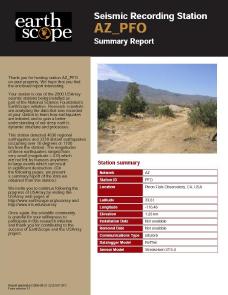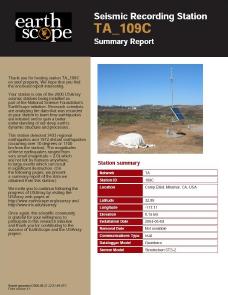
|
|
|
|
August 31, 2008
USArray TA starts moving east!
By Frank Vernon, UCSD-SIO-IGPP and HPWREN Co-Principal Investigator Three contributed ANZA seismic network stations are part of the 2000 USArray seismic stations being installed as part of the National Science Foundation's EarthScope initiative. At any point in time ~400 stations are deployed. These three USArray stations rely on HPWREN to provide continuous real-time data connectivity, providing consistent and exemplary data latencies of several seconds behind real-time. These stations are three of the original deployment. While these three stations remain in place, most of the rest are moving eastward in a rolling pattern.
The USArray component of EarthScope is a continental-scale seismic observatory designed to provide a foundation for integrated studies of continental lithosphere and deep Earth structure over a wide range of scales. Each USArray station includes the instrumentation necessary to continuously sense, record, and transmit ground motions from a wide range of seismic sources, including local and distant earthquakes, artificial explosions, volcanic eruptions, and other natural and human- induced activities. Over the wide frequency range of seismic waves transmitted through the Earth (hundreds of seconds to ten cycles per second), the sensors of the permanent and transportable seismic and magnetotelluric arrays will resolve the smallest background motions at the quietest of sites, while remaining on scale for all but the largest ground motions from regional earthquakes. Information about the progress of USArray can be found by visiting the USArray web pages at:
|


